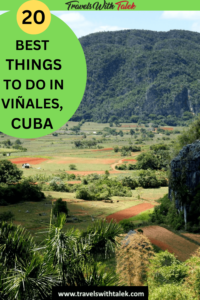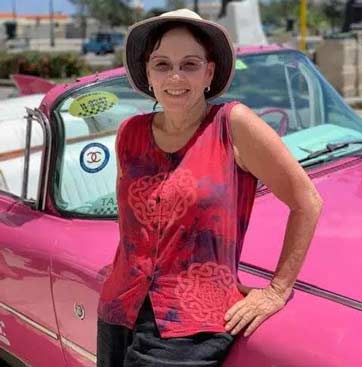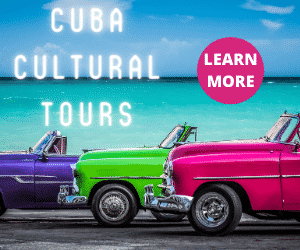There are tons of things to do in Viñales, Cuba, the certifiably spectacular town 3 and a half hours west of Havana.
A trip to the small town Viñales is a definite MUST-DO to enjoy pristine beaches, UNESCO World Heritage sites of natural beauty, history, a vibrant nightlife and more.
A visit to Viñales can be done on a day trip from Havana, but is best explored in two or three days.

Table of Contents
ToggleHow many times have you said, “WOW!, this is the most beautiful place I’ve ever seen”? That’s what I said the first time I saw the Valley of Viñales in Pinar del Rio Province, western Cuba.
I knew the area was lauded for its natural beauty but nothing prepares you for seeing it for the first time.
I’m not the only one that thinks this place is so spectacular. Christopher Columbus said the same thing when he first landed in Cuba. Actually, he was talking about the northern coast but why split hairs.
We drove into this spectacular valley in a 1949 Chrysler with no air conditioner and a very friendly, talkative Cuban taxi driver named Jose.
We stayed at a “casa particular”, a Cuban private house or homestay where you lodge with a Cuban family.
Our casa particular hostess in Havana arranged a taxi for us. The cost was 70 USD one way.
No matter what city you are in, your casa particular hostess can arrange all activities for you; tobacco farm tours, horseback riding, restaurant reservations, taxis or a casa particular in the next city.
The best way to get to Viñales from Havana is with a private taxi. You can also get to Viñales with the Viazul bus system.
The best time to visit Viñales is from May to November for the best weather.

Stare in amazement at the natural beauty of the Viñales Valley
The Valley of Viñales is a UNESCO World Heritage site, the area’s main attraction and one of the main reasons to visit. Very quickly you begin seeing the natural beauty.
The area is dotted with huge limestone formations called mogotes that rise high above the valley floor. I understand this phenomenon is unique to this area.
Make sure to visit the Hotel Los Jazmines. The balcony, called mirador de los jazmines, is the perfect place for the best view of the valley.

Visit tobacco plantations
Besides the knockout beautiful scenery, Viñales is famous as the premier tobacco-growing region of Cuba, an area called Vuelta Baja.
One of the area’s big draws is a visit to a local tobacco or coffee plantation where, of course, they try to sell you something.
Regardless of the sales pitch, you also get to sample terrific coffee and buy the best famous Cuban cigars in the world at reduced prices because you’re buying from the source.
These tobacco farm tours are fun destinations to see something completely different. When you arrive, one of the local farmers will walk you through the tobacco fields to see the plant before harvesting.
Next, you go into the leaf drying area, usually a large barn where the tobacco leaves are hung to dry on beams attached to the roof.
Finally, you are taken to an area where one of the workers explains the tobacco rolling process.
These farm tours are also a great place to sample the local rum.

Delicious Cuban cocktails and beer are served and you can sample cigars. I think the drinks are deliberately strong to induce you to buy more cigars.
By the time you leave, you are best friends with the farmers and everyone has a great time.
The quantity of Cuban products that U.S. citizens can bring into the United States for personal use has varied depending on what administration is in power in Washington.
It is a good idea to check what U.S. citizens can bring to the U.S. beforehand.
Insider tip: Make sure to stay away from people in big cities like Havana who offer you cigars. Tobacco from anywhere other than authorized suppliers is probably counterfeit.
Explore the valley on a horse, bike or hike
You can tour the valleys and the town of Viñales by car, foot or bicycle which are available to rent in many locations.
But a great way to see the countryside is by horse on a leisurely horseback ride enjoying spectacular views.
Hire a horse and local guide (real Cuban cowboys) in town for a few dollars an hour, or ask your casa hostess to reserve for you.
This is the quintessential Cuban experience and one of the most fun things to do in Viñales.
Swim in pristine waters in Cayo Jutias
You can’t leave Viñales without visiting Cayo Jutias. This is a spectacular beach where you can snorkel to the coral reef, go on a boat ride to outlying islands with local fishermen,
You can also eat fresh seafood and drink coconut water with rum in one of the little shacks that serve food on the beach.
Local musicians frequently stop by to play for tips. You would pay good money anywhere else to listen to these talented itinerant musicians who seem to be everywhere in Cuba.
The beach is about two hours away by car or public bus but it’s worth it and the trip is interesting. You are really in deepest Cuba here.
Any taxi will be happy to take you and wait in order to bring you back. Or you can take a “collective taxi.” This is a taxi you share with others going to the same place. Cuban transportation has many options

Tour the underground caves
Another one of the exciting things to do in Viñales is exploring the local caves many of which have underground rivers that run for miles.
This is where you’ll find Cuba’s largest cave system. There are numerous caves in the area but the Cueva del Indio, or Indian Cave, has the best underground river tour on a boat trip.
Boat trips run throughout the day. The cost is 5 USD per person entrance fee. This is truly a unique experience.
The boat driver will ask for a tip. They prefer Cuban pesos rather than foreign currency.
Also nearby is the Mural de la Prehistoria, or Mural of Prehistory.
This is a large, very tall limestone outcropping with painted designs depicting prehistoric images.
Local tour guides will tell you it was painted by indigenous people but, in fact, it was created in recent years.

All the activities mentioned in this post can be booked from any homestay (casa particulars) location.
Eat at a farm-to-table restaurant with a view
Another one of the delightful things to do in Viñales is to eat at an agro-ecological paladar, or private enterprise restaurant, in view of the stunning Valley of Viñales.
All the food is locally grown and the prices are reasonable.
A typical meal will cost 10 to 15 USD and drinks go for about 2.5 USD But you are really there for the breathtaking view.

Three of the best agro paladars are Balcon del Valle, El Paraiso and La Casa Verde.
PIN ME
TO PINTEREST!
Indulge in the nightlife
Believe it or not, perhaps one of the best things to do in Viñales can be to enjoy the nightlife.
There are no less than six, SIX! major music venues along Cisneros Street, the main street. Every one of them has a great dance floor.
The music is outstanding, as it tends to be throughout Cuba, and the rum is legendary.
One of the coolest hangouts I’ve found in Cuba is JP Bar and Tapas on Cisneros; good food, drinks, live music.
You can chill on a wicker rocking chair on the porch sipping the local rum and watching the world go by.
One thing is for sure, you’ll not soon run out of things to do in Vinales.
There are many Cuban “casas particulares” (guest houses or homestays) casas for short in Viñales. Just about every home in town has an extra room or apartment to rent.
To book on the spot, just knock on any door that has the official sign outside and see if they have a vacancy. You can check out the room first to see if you like it.
Remember your casa particular hostess can arrange all tours for you; tobacco farms, horseback riding, restaurant reservations, taxis.
Visit the Museo Municipal
This small museum in town has 5 rooms, each dedicated to a different aspect of the town; natural history, local history, peasant life, countryside ethnography and revolutionary history.
It is worth a visit to better understand the area.
Guaranteed you will not run out of things to do in Viñales.

Beautiful Las Terrazas, Cuba
Las Terrazas, Cuba, a center for Cuban ecotourism is part of a UNESCO biosphere reserve found about an hour west of Havana and 2 hours from Viñales.
It is on the way to Viñales so you can visit either going to Viñales from Havana or on our way back.
Try to combine a visit to both of these destinations on your Cuba itinerary on the same trip. It’s worth it as both have beautiful landscapes.
It’s a great place to visit if you’re interested in ecotourism in Cuba.
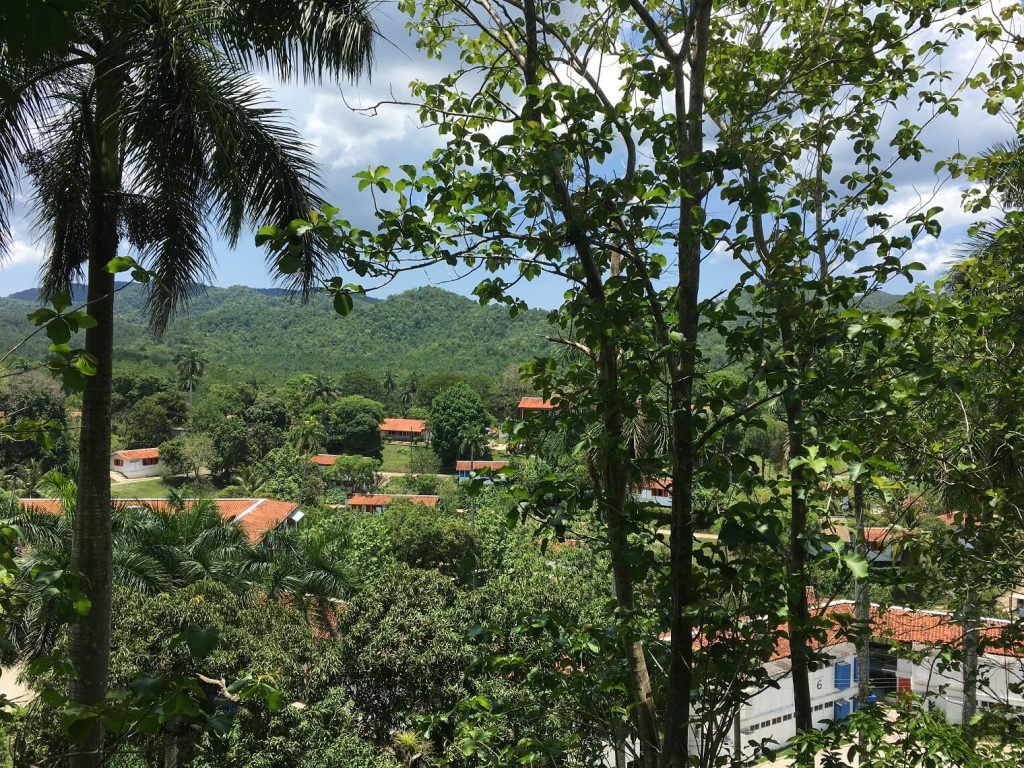
Cuban ecotourism in Las Terrazas, Cuba
Started in 1968, Las Terrazas, Cuba is an eco-project initiated by the brother of Camilo Cienfuegos a central figure in Cuba’s revolutionary past.
Now it is a lush complex with dense foliage, tropical swimming holes, waterfalls and 18th century abandoned coffee plantations.
Las Terrazas is home to almost half of Cuba’s endemic birds along with many other unique flora and fauna.
For the adventurous, there is also a thrilling canopy tour that whizzes you over six lines extending across lakes, a vibrant artist colony and much more.
It is spectacular and a welcome contrast to bustling Havana.
I stayed at the Hotel Moka, the only large hotel in town. It sits on a hilltop with a beautiful view overlooking the forest and the small village.
If you want to learn more about Cuban ecotourism, look no further than this hotel and the surrounding area.
In keeping with the eco-friendly theme of the location, the hotel has a tree growing in the middle of the lobby and serves only locally grown produce.
Another accommodation option is a “casa particular.” These are homestays with Cuban families.
Although you can see Las Terrazas in a day, you may want to spend two depending on what activities appeal to you. Your best bets include:
Soroa Botanic and Orchid Gardens
One of the components of ecotourism in Cuba is the gardens and nature preserves you discover around the island.
One amazing garden for orchids in particular is the Soroa Botanic and Orchid Gardens which boasts over 400 species of orchids and hybrids.
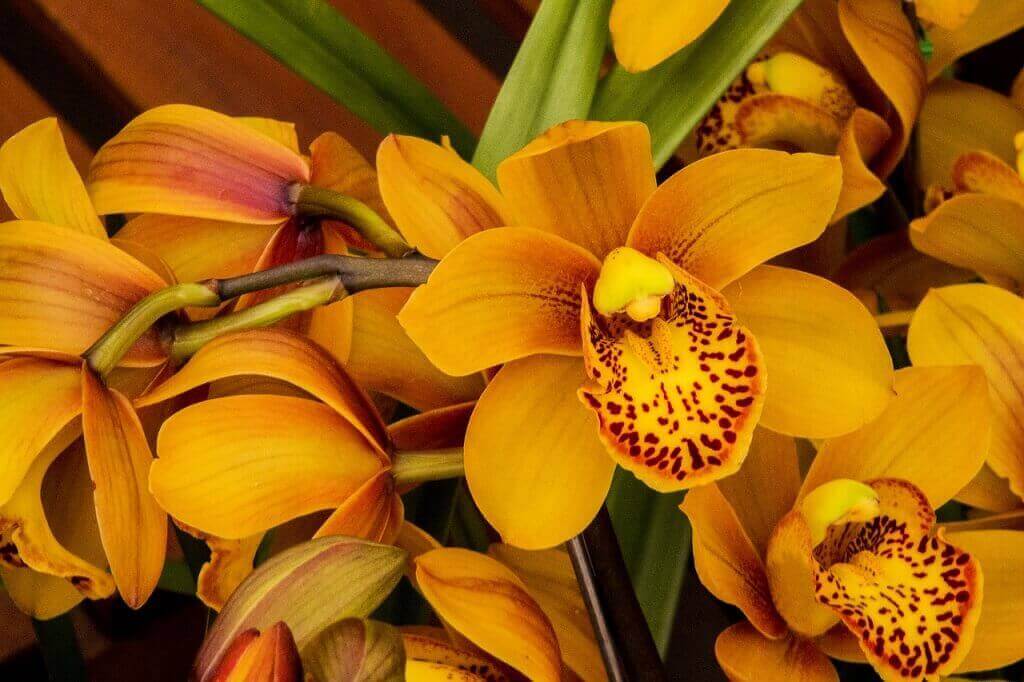
The gardens are affiliated with the local university. There is a small fee to visit. They are just a short drive from the hotel. Taxis are readily available and reasonably priced.
San Juan Swimming Hole
On the hotel grounds and a mere hike away, you’ll find the San Juan swimming hole. Swimming in a tropical waterhole in what you imagine the Garden of Eden to look like is a memorable experience.
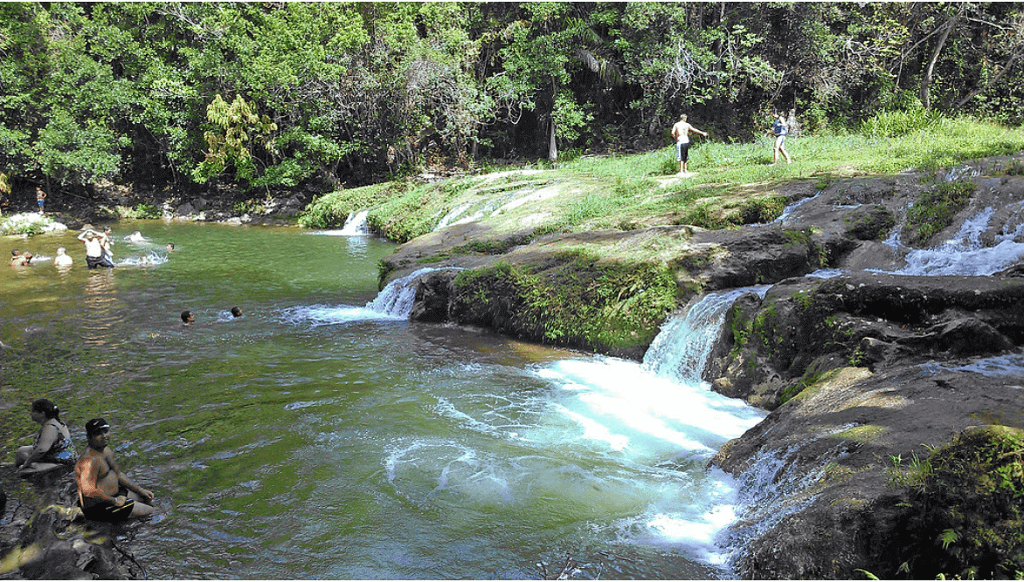
Abandoned Coffee Plantations
French immigrant planters established coffee plantations in the area in the late 1700s.
They were fleeing the Haitian slave rebellions of 1791 and essentially duplicated their plantations in Cuba after having lost them in Haiti.
The plantations are now long abandoned but you can see the ruins of the slave quarters and coffee processing sections.
The “big house” the former home of the plantation owners, has been renovated and serves a simple lunch overlooking the valley’s spectacular view.
Guides are available to explain the history of the plantation. Check the opening hours at the hotel’s front desk before you go.
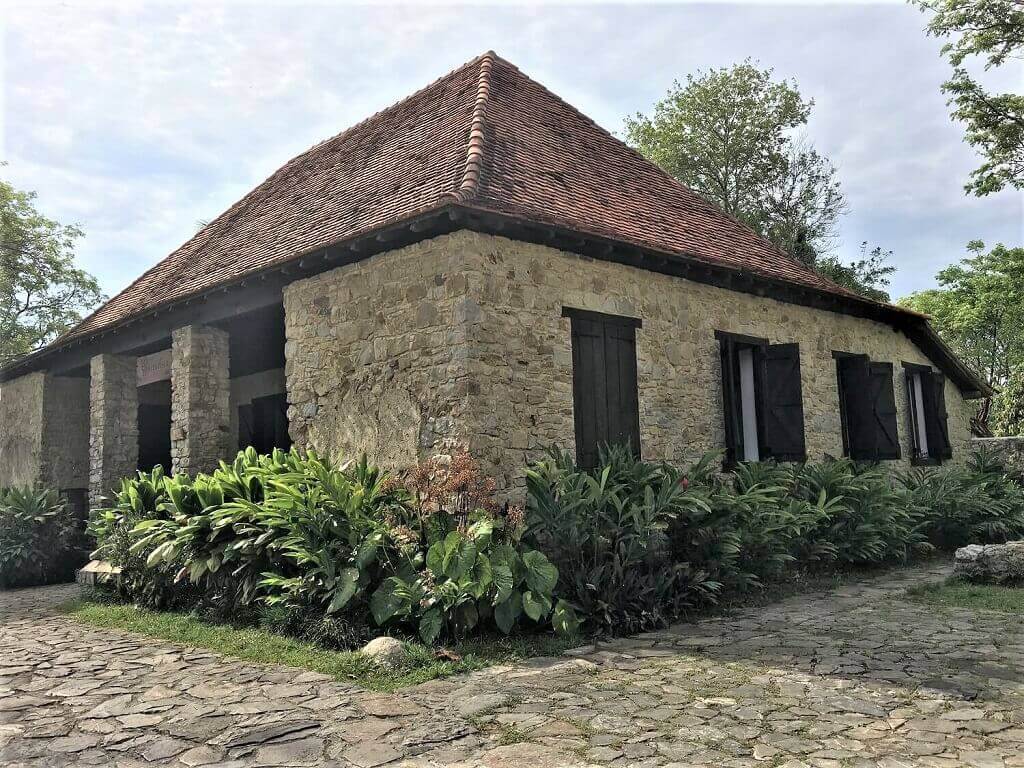
Trails, Trails, and More Trails!
Cuban ecotourism is all about getting out into nature ethically. This is a great way to experience Cuba’s ecotourism.
The hotel maintains a very nice selection of beautiful trails with varying degrees of difficulty. You don’t have to be staying at the hotel to enjoy the grounds.
Guides are mandatory but you will appreciate their extensive knowledge of the flora and fauna.
I think they all have to be students at the biosphere to qualify as guides. The service is free but tips are appreciated.
Artist Colony
There is a good size artist colony in Las Terrazas. The artists live in town and their workshops are in their homes.
You are welcome to enter their homes and watch them work, browse their creations and possibly purchase some very nice and authentic pieces of art for investment or just because you find them beautiful.
The world’s best coffee
There is a little coffee shop in the area, Café de Maria, that bills itself as having the world’s best coffee.
With advertising like that and at about .40 cents a cup, you have to try it.
Ziplining
This was my favorite. I’ve been zip-lining in other locations but nothing like this. There are six lines stretching over lakes, the artist colony and forests.
An exhilarating experience from an unusual perspective that leaves you breathless.

Where to eat in Las Terrazas – Cuban ecotourism at its best
So, where to eat in town? This was an experience full of surprises.
In keeping with the town’s theme of sustainable development, two of the limited amount of restaurants in town are vegetarian. We chose one because it had a cool name, El Romero.
Now, vegetarianism is by no means a hallmark of Cuban culture so I assumed this cuisine was going to be questionable at best.
First, we arrived and there was a line to get in stretching out the door. This was surprise number one. Surprise number two was the maître d’ asking if we had reservations.
Maitre d’?! Reservations?! We’re out in the middle of a biosphere in one of the most remote provinces of Cuba.
I’m wearing flip-flops, a torn tank top and a plastic nose guard to protect against the sun, and this guy is asking me if I have a reservation!
“Sorry,” I said. “We didn’t know we needed one.” This elicited a disappointed frown from the maître d’ but they were finally able to accommodate us.
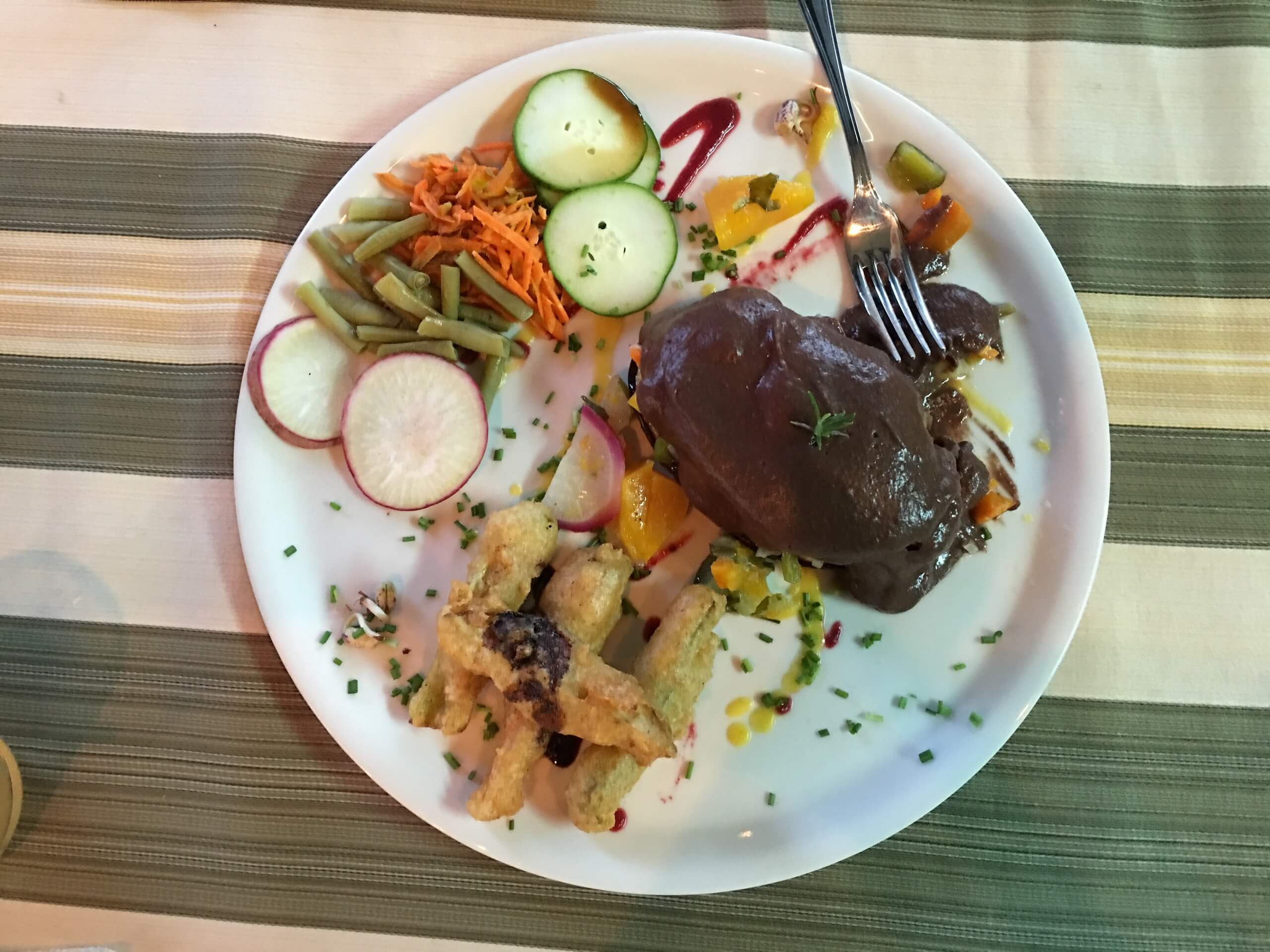
And surprise number three? The food. This was one of the best meals I’ve ever had in Cuba. Go figure. I’m still not sure what I ate, something to do with eggplants, I think, but boy was it good!
If you’ve ever considered a purely vegetarian meal, these restaurants in Las Terrazas is a good reason to try.
Turns out the owner is also the chef from “Bambu”, the award-winning restaurant at the Museum of Fine Arts in Havana.
He is a natural food enthusiast who thought Las Terrazas was the ideal place to open a vegetarian restaurant.
People come from as far away as Havana just to eat here. This restaurant was a good example of sustainable development and Cuban ecotourism gone commercial.
It was a highlight of our trip.
Do you actively seek out ecotourism and sustainable destinations to visit when you travel?
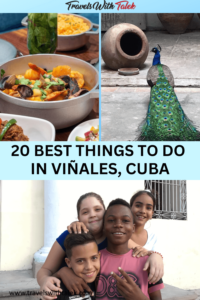
Learn more about Cuba with these handy reference guides

BTW, if you are getting ready for your trip, make sure to take advantage of these useful, money-saving links to book your trip:
- Research and book your flight with Skyscanner. I have found them to be the best because they list all airlines including the budget ones. You are always sure of having researched all options.
- For car rental around the world, Discover Cars has flexible pickup and drop-off options, I recommend Discover Cars.
- Book your accommodation with Booking.com. I find they have a wide selection and a nice, user-friendly, transparent website.
- Protect your trip and, more importantly, protect yourself with travel insurance. I use Travelinsurance.com and have been very happy with them.
- For more general tours to any destination or attraction, book with Viator. Check them out.
- Need a visa? Get your visa for all countries with Passport Visa Express.
- Looking for a cool walking tour to explore a city? My favorite walking tours are offered by Take Walks.
- Food and drink tours are the best way to enjoy a city. And Devour Tours are my favorite.
- Looking for a good VPN to protect your security, privacy and freedom online while traveling? Nordvpn is your best option.
- The best and most economical way to stay connected while traveling is with an Airalo eSIM.
I personally use, and can recommend, all the companies listed here and elsewhere on my blog. By booking through these sites, the small commission we earn – at no cost to you – helps us maintain this site so we can continue to offer our readers valuable travel tips and advice.

